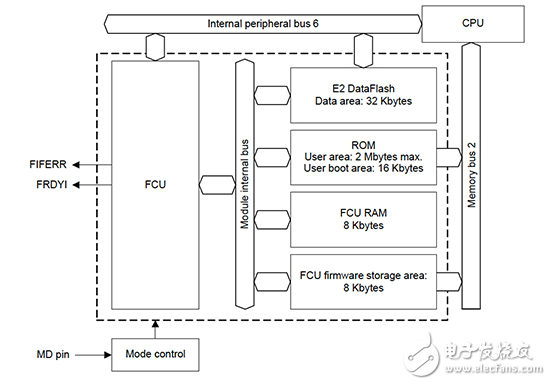
资料下载

使用您的MCU的内存架构,提高应用效率
使用您的MCU的内存架构,提高应用效率
现代微控制器具有多种记忆元素,并了解他们的组织、性能的限制和功率的影响可能是实现一个高效应用的关键。特别是,用于代码存储的片上闪存的特性,用于数据存储的片上SRAM的组织和片外存储器的访问特性将有显着影响整体处理效率。让我们检查这些关键的内存元素,以更好地了解如何最有效地使用它们,以最大限度地提高性能,降低功耗和优化系统成本。
片上闪存
片上闪存可能是任何应用程序中最关键的存储元件,因为它通常是处理器的所有指令的来源。如果指令不能有效地获取,则您的整体MCU性能将受到影响。向CPU传递指令有两种不同的方法。在一种方法中,内存运行速度快,需要匹配的指令周期的CPU。瑞萨RX600组,例如,采用先进的Flash技术,提供高性能的零等待状态访问指令存储器。这种方法导致简化的CPU架构和确定的时序。

Access to Flash memory typically uses a two-port approach with CPU access, via a high-speed bus for read operations and slower access, using a Flash memory controller for write operations. The Flash memory interface for the RX600 is illustrated in Figure 1. Note that the Flash memory is further segmented into a data Flash section, for storing non-volatile information that is frequently modified, and the instruction section, which is typically considered as Read-Only Memory (ROM), even though it uses Flash technology and can be reprogrammed many times by the user during manufacturing or via system updates. The Flash Control Unit (FCU) is a standalone specialized processor that managed Flash writes and has its own RAM and firmware memory blocks. The CPU can initiate FCU operations; this is accomplished using the peripheral bus shown at the top of Figure 1.
声明:本文内容及配图由入驻作者撰写或者入驻合作网站授权转载。文章观点仅代表作者本人,不代表电子发烧友网立场。文章及其配图仅供工程师学习之用,如有内容侵权或者其他违规问题,请联系本站处理。 举报投诉
- 相关下载
- 相关文章





